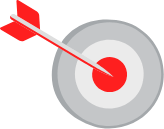E-commerce businesses source raw materials or final products from manufacturers. In ideal conditions, businesses could simply get the supplies they need to meet their demand.
But most suppliers employ a Minimum Order Quantity (MOQ), requiring brands to buy a specific number of items. This means that sometimes manufacturers and suppliers will turn away customers if they are not willing or unable to meet the MOQ.
While it may seem like a barrier to smaller businesses, MOQs are set by suppliers to ensure production efficiency and cost-effectiveness, often resulting in lower prices per unit for the buyer. Therefore it is important to understand how minimum order quantity works and why some suppliers enforce it.
It’s likely that your business’s required quantity may not align with the manufacturer’s MOQ. However there are certain benefits to MOQ, like better inventory management and bulk discounts. It’s a strategic element that, when planned for properly, can indeed contribute positively to a business’s financial health.
Table of Contents
What is Minimum Order Quantity (MOQ)?
MOQ, commonly defined as “Minimum Order Quantity” is the smallest number of units required to be purchased at one time. Essentially, it is the bare minimum stock that a company must purchase from a supplier at any given point.
Why do suppliers set a Minimum Order Quantity (MOQ)?
MOQ plays an important role in determining both the price and availability of products, making sure that the business producing units not only cover their costs but also make some profits.
When sourcing from China, MOQ can have a huge impact. Choosing the right order quantity can often result in improved quality and cost savings. This is mostly because larger orders give you more influence and control at the factory level. Given that factories heavily rely on individuals and services within the supply chain, their priorities are highly influenced by these factors. So relatively, smaller quantities hardly get the attention needed to enhance quality while reducing costs at the same time.
What are types of MOQ?
There are two types of MOQ, supplier-set MOQs and brand set MOQs.
Supplier-set MOQs are set by suppliers and then presented to brands interested in purchasing from them. They do this to eliminate potential losses along production process.
For example, let’s consider a clothing supplier who receives an order of 10 shirts from a local brand. In order to fulfill this order, the supplier needs to buy raw materials and hire labour. This entire process costs him around $500. After that, the supplier sells these shirts for $10 per piece. They only make $100, which is far from the production cost.
On the contrary, if a brand places a larger order for about 100 shirts, it reduces the production cost by half. How? Because now the supplier can get the raw materials in bulk at lower prices. So, even if they sell their shirts for $8 each, the supplier would still make $800. This way, the manufacturer not only covers the production cost but also generates a profit of about $300.
In some cases, brands may also set MOQs for their retail partners or distributors. Their reason for setting MOQ is to make sure the retail partners are serious about carrying their products and are willing to invest in sufficient inventory to meet customer demand. This helps the brand maintain consistent pricing and brand image across different retail outlets.
Basically, both supplier-set and brand-set MOQs are there to ensure profitability and manage production costs. Whether it’s clothing items, electronics, or any other product category, setting a minimum order quantity helps maintain consistency in pricing and distribution.
How to Calculate Minimum Order Quantity?
When it comes to setting a Minimum Order Quantity (MOQ), there is no one right number. Different MOQs work for different businesses, as all businesses have their own unique requirements and production costs depending on the type of the product.
For both brands and suppliers, It’s bit of a tightrope walk. You can either go big with a higher MOQ and enjoy lower prices or choose convenience by paying a higher price per piece with lower a MOQ.
Even though the concept of minimum order quantity is highly variable, here are some important factors you might want to consider:
Forecasting Demand:
As a supplier or an e-commerce brand, before producing or purchasing any stock you need to know the demand of your products and services. To predict that, you can consider factors such as product type, market trends, historical sales data, and seasonality. This data will help you estimate the right amount of units to be manufactured or purchased in order to meet the existing demand.
Accurate demand forecasting also helps businesses with efficient inventory management to overcome the problem of overstocking.
Calculating Break-Even Point:
Understanding the break-even point is essential for both suppliers and merchants when setting Minimum Order Quantities (MOQs). It represents the per-unit cost at which the company neither makes a profit nor a loss. Typically, brands and suppliers calculate this cost, and then set their MOQ slightly above it to ensure profitability.
For example, if a supplier produces a single unit of a product for $2, its break-even point would be $2. In the same way, if an ecommerce brand buys 100 pieces of a product at $300, the break-even cost per-unit would be $3. This knowledge helps them in making their prices decisions.
Understanding Holding Costs:
Storing certain items can be more costly than others, depending on factors such as their size, duration, and any special warehousing conditions. To optimize profits, its important to balance inventory levels. One needs to make sure that high-cost items are stored for the shortest possible duration.
Your holding cost is the total expense of storing and maintaining your all your products. It is a factor that cannot be overlooked before investing heavily in your inventory. This means that suppliers might want to wait for an order before purchasing raw materials or finished goods. Similarly, merchants should carefully assess holding costs before agreeing to higher MOQs.
Determine MOQ:
After understanding all these aspects, suppliers and brands are set to determine an MOQ.
Suppose that your business:
- Has an expected demand of 1000 units in the next 6 months.
- With a break-even point of $8.
- And a storage cost of $2 per unit half yearly.
If you produce and store 1000 units of your demanded product, it costs you around $10,000. To cover this expense and make profits, you need to sell each piece for more than $10. The price you set directly impacts your MOQ. For example, if your brand charges $12 per unit, you need to sell above 834 units to make profits, any less than that will loose you money. In this case, setting an MOQ higher than 834 units will result in profits.
On the contrary, if your brand charges $20 per-piece, you wont have to sell as many units to make profits. When your price per unit is higher, you can cover the costs while making profits, so your MOQ can be lower. Here you will only have to sell 501 units to turn a profit, so setting an MOQ of 520 would be appropriate to generate money from sales.
Conclusion:
When starting a new business, managing finances intelligently is one of the biggest challenges. Implementing a minimum order quantity (MOQ) requirement may hold some brands and manufacturers from working together initially. However, in the long term, having an MOQ can safeguard your company from losses incurred from production and storage costs.
Determining the right MOQ requires alot of research, calculations, and sales planning. Make sure to consider the factors such as expected demand, break-even point, and holding costs as discussed above. Once you find the most suitable MOQ for your business, it can help you scale up your venture while maximizing profits.




